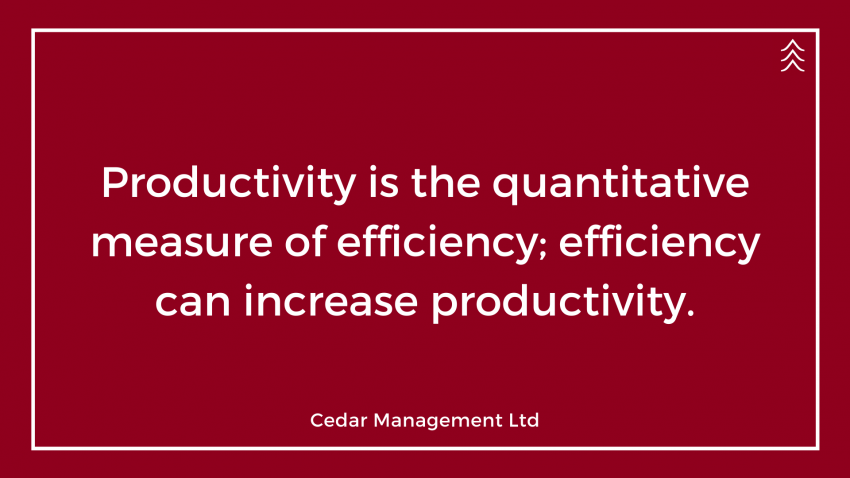Efficiency and productivity are the terms mostly used together but they have different meanings. Productivity is the quantitative measure of efficiency; efficiency can increase productivity.
Productivity: the ratio of input and output
Productivity focuses on the quantity of output; it is the rate at which goods are produced. It is defined as output per unit of input which can be material, capital or labour or any other resource. It is a measure of performance; good productivity can result in profits and a potential increase in income. Several factors can affect productivity, they include skilled labour, depreciation of machines and effective management, etc.
For example, a factory producing 1000 units a day with 20 workers will be more productive than a factory producing 800 units a day with 20 workers.
Efficiency: more out of less with minimum waste
Efficiency focuses on making more out of less i.e. using minimum inputs to get the best possible outputs. Efficiency means optimum use of resources for minimum waste and reduced costs. Business efficiency can be of different types, depending on factors like processes, operations, energy consumption, return on investment, labour, etc.
A worker or a machine is deemed efficient when more output is achieved with fewer resources and in less time.
A business needs both
Productivity without efficiency and efficiency without quality may not support the delivery of good business objectives. A product that does not meet with quality standards is more likely to be returned to the manufacturer. A good balance between business efficiency and productivity will improve competitiveness and increase market share.
